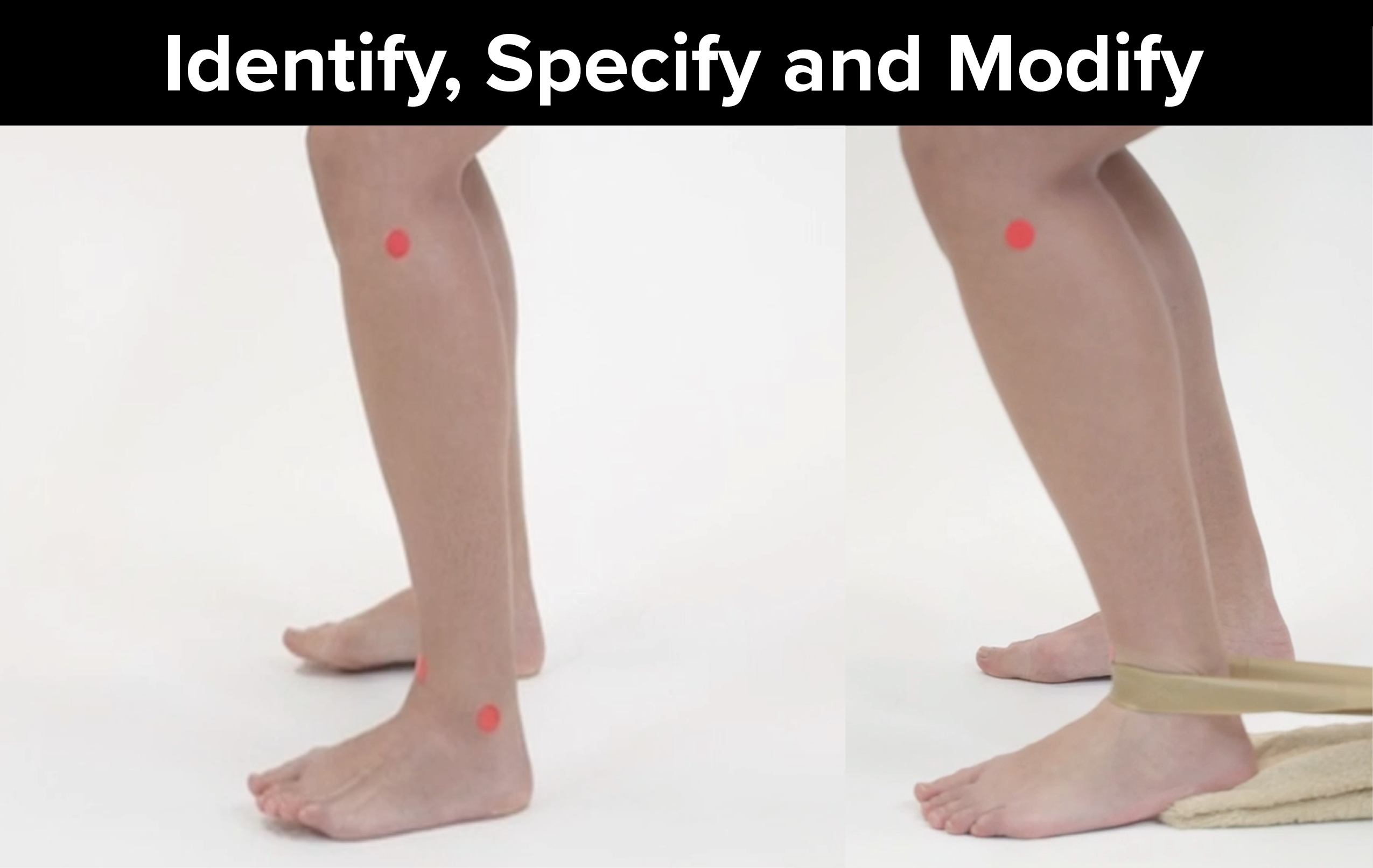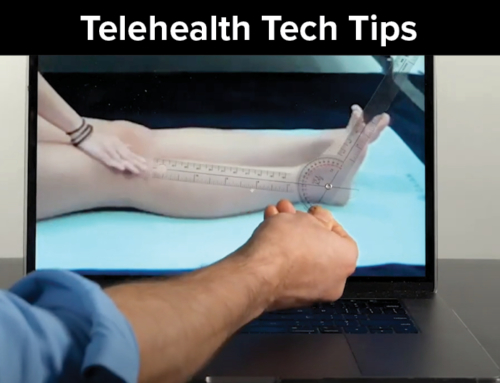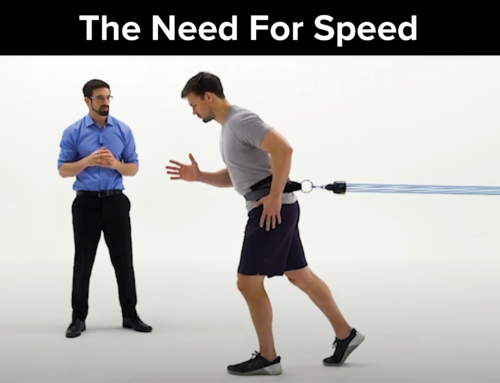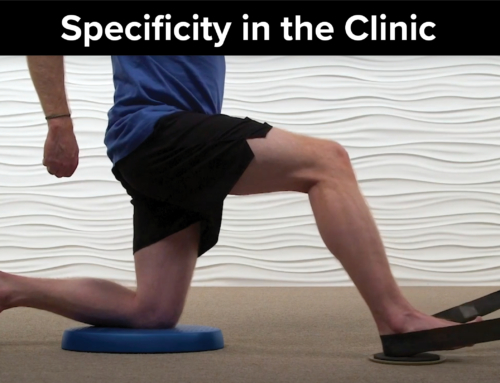How many times have you found yourself assigning similar exercises to patients with various conditions? Think about how many times you have prescribed basic exercises, such as clamshells or bridges to strengthen the gluteal muscles, without determining whether or not it was the most appropriate exercise.
Therapists can often lose sight of the art of exercise prescription and progression. This article discusses how to develop specialized exercise programs that ultimately lead to helping our patients meet functional goals. We will also discuss the fundamental need for a progressive increase in the challenge of exercise. To get started choosing, modifying, and progressing programs, we can follow the three key steps outlined below.
1. Identify the Primary Impairment
The first step in choosing an exercise that will improve your patient’s activity limitation is to identify their primary limiting impairment. Use objective measures to identify whether the patient’s primary impairment is related to one of the following:
- Mobility deficits – joint or soft tissue restrictions
- Muscle performance deficits – strength, power, or endurance deficits
- Movement coordination impairments – abnormal/aberrant movement patterns, incorrect muscle activation timing, or balance deficits

2. Create Task Specific Exercises
After you’ve identified the primary impairment(s), you’re ready to intervene. You want to provide your patients with exercises that are meaningful and can be replicated at home. Creating exercises that specifically mirror functional tasks has two main benefits:
- Patient understanding – Patients can see the direct link between your exercise prescription and the activities that they want to perform without pain or difficulty.
- Functional carryover – Since the exercise is similar to the activity limitation, you can be more confident that you will see improvements the actual task performance following the prescribed exercise.
Task Specificity Example – Sit-to-Stand
Imagine your patient has limited ankle dorsiflexion during the weight acceptance phase of a sit to stand task. Assessing their ankle mobility reveals limited posterior glide of the talus, the primary impairment restricting their ankle range of motion. You can now use this information to create a task specific self-mobilization that glides the talus posteriorly during sit-to-stand transfers. The video below (provided by Jared Vagy, courtesy of The Athlete Movement System) demonstrates use of a strong elastic band to create posterior mobilization of the talus with a squat. This technique effectively addresses the mobility deficit that was identified as the patient’s primary impairment and mirrors the task of sit-to-stand transfers.
[youtube v=”GGxVPAa9bvY”]
3. Apply Exercise Modifications
Now that you have chosen an exercise that is specific to your patient’s functional tasks, you need to modify the exercise to meet your patient’s skill level. There are 9 main variables that can be adjusted in order to increase or decrease the demand of any exercise. Each variable includes a spectrum of options, leading to countless variations of each exercise. Based on your patient’s performance, you can adjust one or multiple variables, making sure that the patient is able to demonstrate good form with your exercise choice. You may even choose to use one variable to increase the demand of the exercise while simultaneously using another variable to decrease the demand.

Exercise Adjustment Example – Running (Single Leg Task)
This is one example of a progression for a runner presenting with excessive knee valgus due to excessive hip adduction during a single leg squat. This runner’s abnormal movement pattern is due to hip abductor weakness. Below you will see an exercise progression with controllable variables bullet pointed for each progression.
Initial Exercise: Anterior lunge with green Theraband (anchored medially) in front of a mirror.
- External support (double leg exercise)
- Resistance (green Theraband)
- Feedback (constant)
- Speed (slow)
Progression 1: Single leg squat with green Theraband and upper extremity support in front of a mirror.
- External support (single leg, upper extremity) – increases demand at lower extremity, decreases demand through upper extremity support
- Resistance (green Theraband) – maintain demand
- Feedback (constant) – maintain demand
- Speed (slow) – maintains demand
Progression 2: Single leg squat with red Theraband with no upper extremity support performed quickly with intermittent video feedback.
- External support (single leg, no upper extremity support) – increase demand
- Resistance (red Theraband) – decrease demand
- Speed (quick) – increase demand
- Feedback (intermittent) – increase demand
Progression 3: Single leg hop from 4” box with no resistance band with intermittent video feedback
- External support (single leg, no upper extremity) – maintain demand
- Resistance (no Theraband) – decrease demand
- Speed (quick) – maintain demand
- Feedback (intermittent) – maintain demand
- Height/Depth (4” box) – increase demand
Progressively Working Toward Goals
Graded exercise programs help patients systematically work toward goals. To design effective progressive programs we should follow these three steps:
- Identify the primary impairment
- Create task specific exercises
- Apply exercises adjustments
Try using these steps, along with your own creativity, to create exercises that bridge the gap between your patient’s current activity limitations and their goals.
Authors
About Jared Vagy, PT, DPT, OCS, CSCS

Dr. Vagy received his Doctorate in Physical Therapy (DPT) from the University of Southern California (USC). He has completed a one-year residency in orthopedics and a one-year fellowship in movement science. Dr. Vagy is a Clinical Assistant Professor of Physical Therapy in the DPT program at USC. He has published three books and numerous articles on injury prevention. Dr. Vagy delivers lectures and seminars internationally on the topic of The Movement System. He is an orthopedic clinical specialist and a certified strength and conditioning specialist.
Dr. Vagy has served as a physical therapist in China for the Chinese National Track and Field Team, worked with USA Track and Field at the Olympic Team Trials, completed a rotation at the US Olympic Training Center working primarily with USA Men’s gymnastics, and provided medical care at international events such as the International Weightlifting Federation World Championships. He has rehabilitated several world champions, gold medalists, and Olympic athletes. His assessments and treatments are rooted deeply in an understanding of The Movement System.
About Connie Hutchins, PT, DPT

Dr. Hutchins received her Doctor of Physical Therapy from the University of Southern California (USC) in 2016, then went on to complete the orthopedic residency program at USC. She works at Rehab United in San Diego, mainly treating patients with orthopedic and sports conditions. She is also a co-investigator in a study to assess the effects of high-velocity, low-amplitude techniques on short-term strength changes in muscles at the foot and ankle.
Connie enjoys teaching entry-level DPT students clinical reasoning and manual therapy skills as well as assisting with continuing education courses.
References
- The original article and associated course can be found on the Medbridge blog page at this link: Click here







Leave A Comment